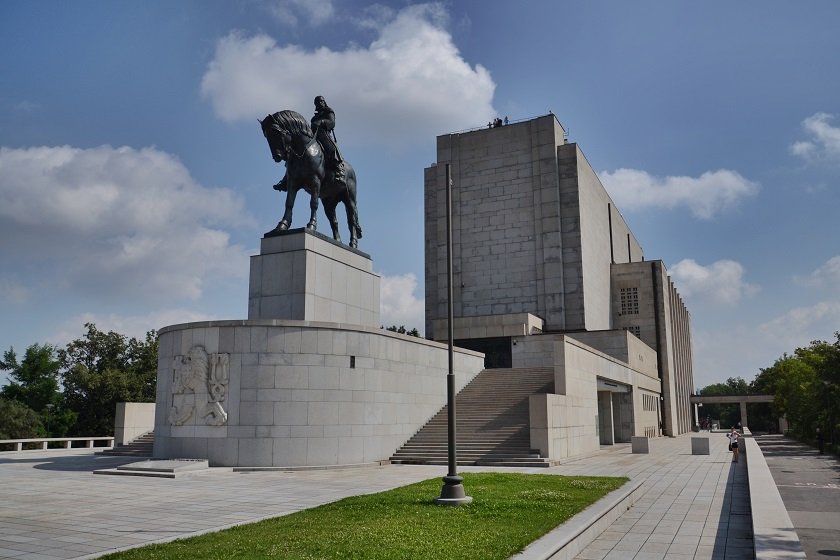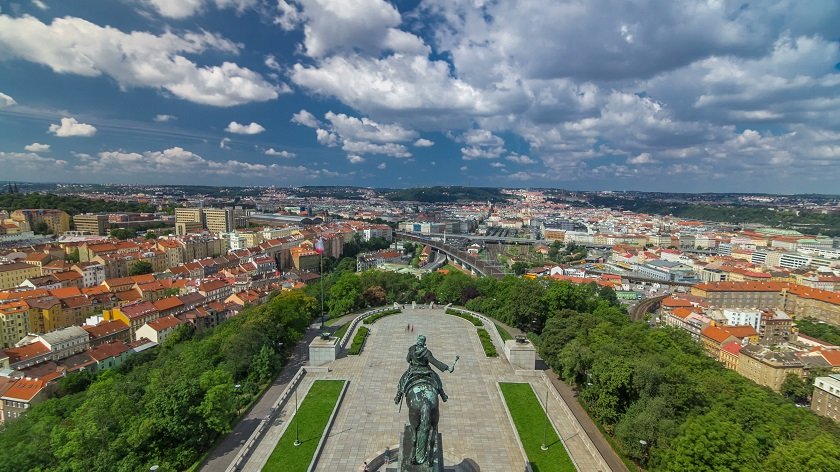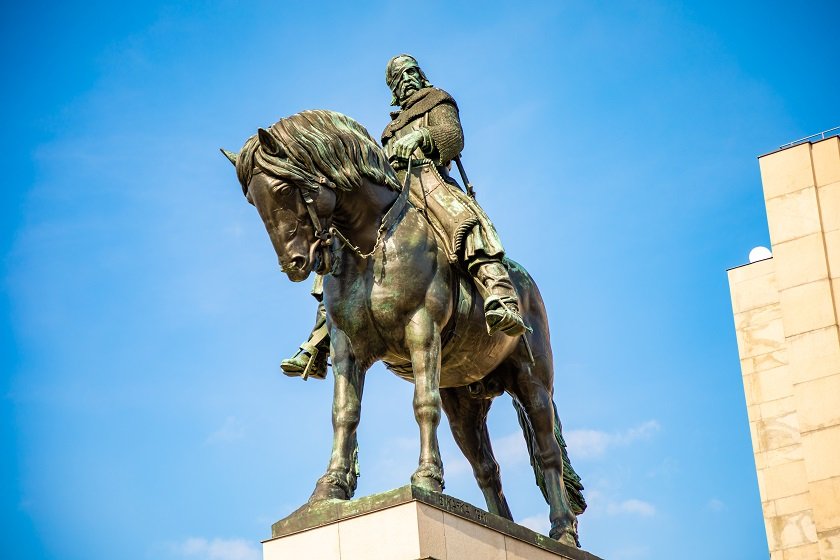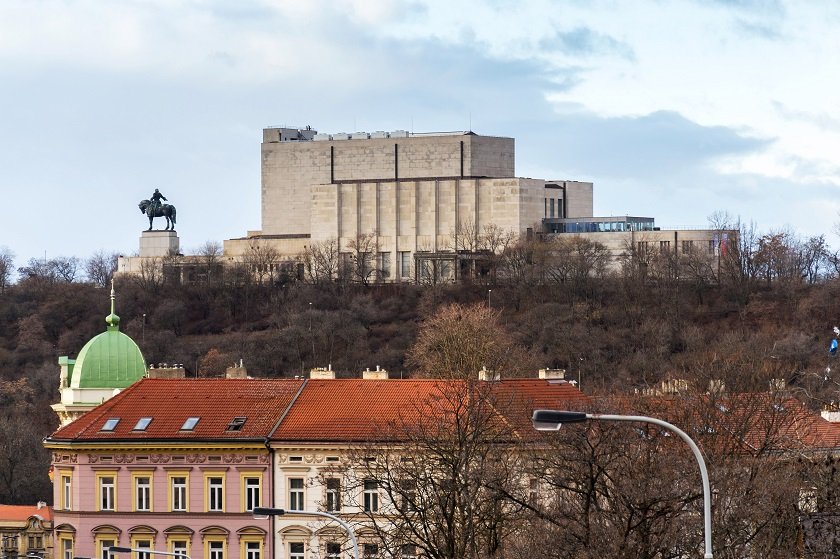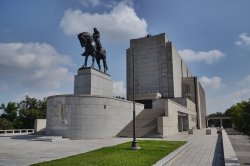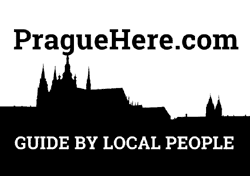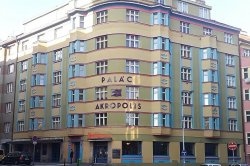National Monument on Vítkov Hill
The National Liberation Monument is a functionalist building on top of Vítkov Hill, which is surrounded by the Žižkovský Park. There is also the bronze statue of Jan Žižka, a Czech military leader, by sculptor Bohumil Kafka. It is the third largest equestrian statue in the world. The foundation stone of the National Monument on Vítkov Hill was laid in 1928, according to the design by architect Jan Zázvorka. The Monument was originally built in honour of Czechoslovak Legionaries. Today, it houses a permanent exhibition entitled Crossroads of Czech and Czechoslovak Statehood, which captures the important milestones in Czech 20th century history. There is also a rooftop terrace and a café overlooking the Žižkov and Karlín districts of Prague. The Monument is used for lectures, theatre performances and classical music concerts.
Useful information for visitors
Public transport connections
U Památníku bus stop
Opening hours and admission
For up-to-date information about the admission fees and opening hours of the National Monument on Vítkov Hill, visit the official website.
Interesting facts about National Monument on Vítkov Hill
The interior of the building is decorated with mosaics by Max Švabinský and a sculpture by Jan Štursa. The National Monument on Vítkov Hill was to be opened in 1938; however, it was cancelled due to the bad political situation in the country. During the Protectorate period, it was occupied by Germans who used it as a Wehrmacht warehouse. However, it didn’t serve its original purpose after the war either; in the 1950s, important personages of the Communist Party were buried there. Later, a mausoleum was established in the Monument, in which the embalmed body of President Klement Gotwald was placed. After the Velvet Revolution, all the remains were returned to the families of the deceased and buried in the communal grave of the Communist Party at Olšany Cemetery in Prague.
